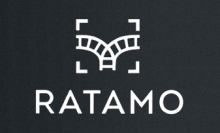Päivikki Kallio
18.1.-11.2.
The exhibition consists of three installations, the material originates from the archives of my family. I wonder how these childhood years have influenced on my way of thinking and on my world view.
The starting point of the Innocence installation (2020) is an old school photo from the 60s. The faces have been separated, each one on it’s own paper surface. The silk screen prints are made with white ink on white paper. The paradox of light realizes the work - when the light hits the surface, only the white surface can be seen, but when viewed from the other side, the materiality of the printing ink transforms the faces visible.
The Book of Hours (2023) takes the texts from the notes of a five-year diary. I have chosen from the years 2005–2008 one day, the 15th of each month. The viewer has an opportunity to participate, 12 round marble bars with sticks form an archaic game. On their surface you can read the texts of the days partly faded, partly highlighted, realized as pigment transfers.
The background of the installation City Lights/Lost City, 2023 is based on a phenomenon I noticed by chance years ago. I wanted to create a thin beam of light and I installed an aluminum plate (gobo) in the spotlight with only a small pinhole in the middle. The result was unexpected – not a line of light at all, but a pinhole photo image from the inside of the spotlight was visible on the wall.
This phenomenon is utilized when composing the wall from punch cards. Originally the results of the scientific experiments have been coded on these punch cards, a diagram has been drawn from the summary, and a letterpress plate has been made from it, a printout of which has been printed in a book. In the installation Citylights, however, the piercings are interpreted differently with light. The punch cards work like a pinhole camera, the spotlights show not only the rectangular holes but also the round projections of the spotlights onto the wall. The punch card works like a score, which reminds for instance punch bands made for mechanical piano. In the installation, the light sources interpret a "composition", which can be imagined as a new kind of recording of a scientific process.
The punch cards of the City Lights installation originate from the end of the 50s, from my father's doctoral thesis on education science at the Jyväskylä University of Education Science "Psychical satiation in school children in different kinds of pause situations" (Jyväskylä 1961)
The exhibition is accompanied by a performance on Thursday 25.1. at 6 p.m. The Naarmu band performs IBM for Merce Cunningham (1960) by Toshi Ichiyanagi. The installation City Lights is used as one instrument, It’s IBM punch cards are from the same period as the punch card notation of Ichiyanagi’s IBM work. The Naarmu band works as a part of the Tulkinnanvaraista platform, which researches and presents avant-garde music.
Although the exhibition focuses on the past and contains elements of longing, I think the big picture is "reflective nostalgia"*. The punch cards serve as an example of historical awareness, a return to the roots, which are still tangible and understandable, but on which this strange world of multiple algorithms is nevertheless based. The belief in the progress of science and learning is realized on a general level. On an individual level, repeating and spinning time infiltrates everything, which I think is in the core of art itself.
*Antto Vihma: Nostalgia – theory and practice, Teos, 2021.
Thursday 25th January at 6 pm
The Naarmu band performs IBM for Merce Cunningham (1960) by Toshi Ichiyanagi. The installation City Lights is used as one instrument, It’s IBM punch cards are from the same period as the punch card notation of Ichiyanagi’s IBM work.
The Naarmu band works as a part of the Tulkinnanvaraista platform, which researches and presents avant-garde music.
Free entrance

